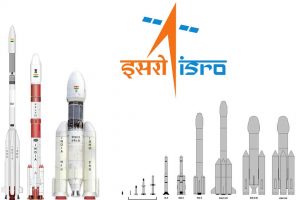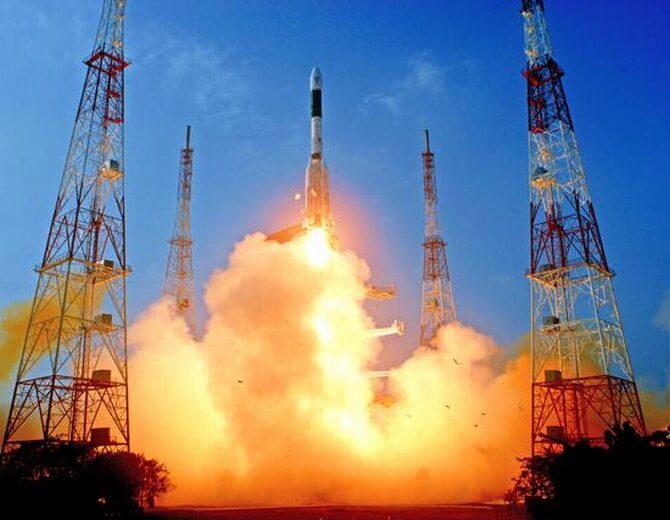The union cabinet approved the setting of IN-SPACe and opened up the space sector for private players, reports Joydev. An exclusive for Different Truths.
 From monitoring the weather to navigating to last-mile broadband connectivity, space missions are no more just luxury missions but have become a necessity these days. To synergise the efforts of ISRO in space exploration, the union cabinet approved the setting of IN-SPACe (Indian National Space Promotion and Authorisation Centre) and opened up the space sector for private players. This historic decision is set to bring long-term reforms in the Indian space sector.
From monitoring the weather to navigating to last-mile broadband connectivity, space missions are no more just luxury missions but have become a necessity these days. To synergise the efforts of ISRO in space exploration, the union cabinet approved the setting of IN-SPACe (Indian National Space Promotion and Authorisation Centre) and opened up the space sector for private players. This historic decision is set to bring long-term reforms in the Indian space sector.
From monitoring the weather to navigating to last-mile broadband connectivity, space missions are no more just luxury missions but have become a necessity these days.
About IN-SPACe
The IN-SPACe, which will be functional in six months, will act as an extended arm of the Indian Space Research Organisation (ISRO). It will be the fourth vertical under the Department of Space (DoS), which will facilitate India to expand its footprint in the $360 billion global space market. Currently, the three verticals under the DoS are ISRO, the autonomous bodies, and the third one is New Space India Limited (NSIL). IN-SPACe will not influence ISRO and neither will get influenced, rather it will work in consultation with ISRO to guide and promote the private companies in their attempt in space activities.
The IN-SPACe, which will be functional in six months, will act as an extended arm of the Indian Space Research Organisation (ISRO). It will be the fourth vertical under the Department of Space (DoS), which will facilitate India to expand its footprint in the $360 billion global space market.
As far as the decisions of IN-SPACe are concerned, once a private company approaches IN-SPACe for using testing facilities and systems of ISRO, the decision f IN-SPACe will be binding on ISRO and other stakeholders.
Role of Private Players
With this historic announcement, private players will get a solid turf to play their role. They will be allowed to use ISRO’s technical and scientific resources, data, and infrastructure for their space programs. Until now, the participation of public enterprises was restricted only to the manufacturing and fabrications of satellites and rockets. Now, besides producing their own satellites and rockets, private companies can also use ISRO’s launch facility for a fee. Satellite and Rocket manufacturing will get commercialised, which in turn is expected to revolutionise the space industry.
Until now, the participation of public enterprises was restricted only to the manufacturing and fabrications of satellites and rockets. Now, besides producing their own satellites and rockets, private companies can also use ISRO’s launch facility for a fee.
With barely three per cent share in the global space economy of $360 billion, India’s contribution was too low being just the suppliers of components and sub-systems. Lack of technology and resources hindered the Indian space industry to carry out independent space projects like that of SpaceX. Moreover, space-based applications and services have a pressing demand these days, which ISRO is unable to cater alone. A number of sectors including weather, transport, urban development, and agriculture have high-level requirements of satellite data and imageries.
A Step towards Space Age 2.0
Capitalising on this opportunity, India can step in the second age of Space exploration. At present, the import of precision scientific instruments stands at 80 per cent. Imagine, had the exporting countries decided to increase the prices, disrupt supply chains, or impose sanctions (possibly due to a war-like situation or the ongoing pandemic), India’s R&D labs would have been disastrously affected. This significant decision would lessen India’s dependencies on other countries and take it towards an ‘Atmanribhar’ or self-reliant nation.
Besides boosting the domestic economy, this will also facilitate ISRO to carry out its space explorations at reasonable costs. The war over supremacy in global telecommunications between the U.S. and China is not just limited to earth but also involves Deep Space Networks (DSNs).
Besides boosting the domestic economy, this will also facilitate ISRO to carry out its space explorations at reasonable costs. The war over supremacy in global telecommunications between the U.S. and China is not just limited to earth but also involves Deep Space Networks (DSNs). It is high time that India should engage with other friendly countries to host at least 2 DSN antennas in the space to establish independent communication capabilities for distant interplanetary missions. As of now, India has a sole 32-meter antenna located in Byalalu in Bengaluru.
space explorations at reasonable costs. The war over supremacy in global telecommunications between the U.S. and China is not just limited to earth but also involves Deep Space Networks (DSNs). It is high time that India should engage with other friendly countries to host at least 2 DSN antennas in the space to establish independent communication capabilities for distant interplanetary missions. As of now, India has a sole 32-meter antenna located in Byalalu in Bengaluru.
Well, it’s still a long way for private players to actively participate in ISRO’s research and development process and explore its treasure trove of geospatial data. It would be interesting to watch how IN-SPACe carries out its operations given a larger private sector demand for space explorations.
Photo from the Internet





 By
By

 By
By